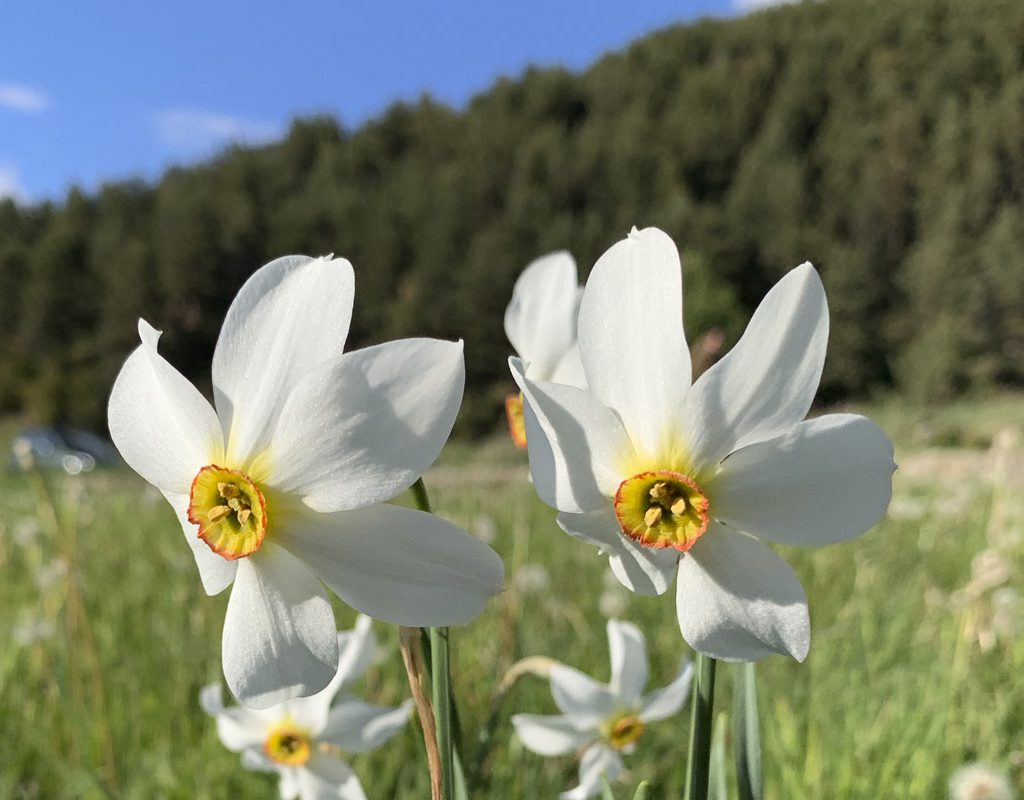With our confinement, the environment has enjoyed a moment of peace and quiet. Pollution rates have gone down, we have begun to hear silence, and in many places, the animals have lost their fear of wandering into the now deserted city spaces, which are free of people, vehicles and activity. Hence, it seems that our staying home has led to a boom in nature, which, coinciding with the spring, is waking up from the long winter slumber with a succession of colours and whimsical shapes.
In fact, nature itself has always been a source of artistic inspiration. And its flowers in particular: they are a motif in countless songs, poems and prose that evoke their shapes, colours and scents; artists have chosen to reproduce their hues on canvases, ceramics and wood; and every spring we clothe our bodies with garments bursting with colourful floral prints.
In Andorra, if any one flower has a lead role in artistic inspiration, it is undoubtedly the poet’s narcissus, from the daffodil family. This fragile flower with six white petals and a yellow crown with red trim grows half hidden in the spring and is hailed as the national flower of Andorra.
With a scientific name like Narcissus poeticus, there’s no doubt about the poetic nature of this flower, as it has been present in the poetry and poetic prose of a long list of Andorran authors. Through their lyrics, they have exposed this fragile white flower with paper-thin petals and a delicate, thin, curved stem and they have described its intense characteristic perfume. A perfume that you will nevertheless discover by simply going out into the mountains and bringing your nose to the flower.
Unfortunately, this year we won’t be able to go out and enjoy the poet’s narcissus, although we are fortunate that these flowers faithfully return year after year with the arrival of the warmer weather. Next year they will be here again, filling the fields with colour. And that will be yet another reason to go out into nature and enjoy Andorra’s breathtaking environment. A treasure to be conserved and discovered!



